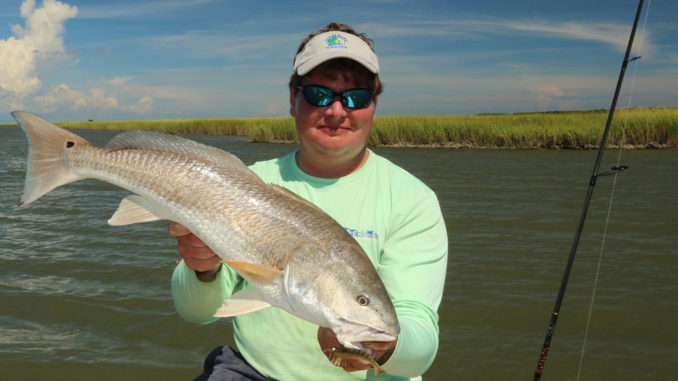
Popping corks key weapons for inshore fish
Most anglers’ first memories of fishing involve a cork with some type of live bait dangling beneath it. For the fish, this meant the bait was in the strike zone instead of getting buried in the mud, but to the angler, it meant being able to tell whenever a fish was biting.
This was an easy form of fishing that often involved eating a sandwich, digging in ant beds or skipping rocks while that cork did all the work until someone yelled “Hey, you got a fish!” and you noticed your cork was underwater. It was a great introduction to the sport, and even though saltwater fishing with popping corks isn’t quite that hands-off, corks are great tools for saltwater anglers.
Saltwater popping corks are beefed-up versions with a heavy wire running through them. Weights and beads are threaded on the wire both above and below the body of the cork. The main line coming from the reel ties to one end of the wire, and the leader going to the bait connects to the other.
Unlike those corks most anglers used as kids, these aren’t made to just keep the bait in one spot and alert anglers when a fish bites. They are tools that, when used properly, can help lure fish that wouldn’t otherwise notice the bait or lure suspended beneath it. Some are oval shaped, and some have a cupped top that makes water spit in front of it similar to a Rebel Pop-R.
The combination of beads and weights knocking against each other causes sounds that imitate the noises made when fish are actively feeding. This attracts other fish. Once they come check things out, they see the live bait or artificial lure under the cork, and if the angler is playing his cards right and has a little bit of luck, the fish will bite.
Capt. Addison Rupert of Lowcountry Outdoor Adventures in Mt. Pleasant said he likes a loud cork, and he likes to keep it moving, especially where a strong current is present. He casts to the other side of the current, then quickly retrieves it perpendicular to the current, pausing very briefly during the retrieve.
Other than making noise and keeping the bait suspended, some corks give anglers the ability to cast greater distances, thanks to the amount of weight involved in the rig. Some anglers, like Capt. Rick Percy of Reel Chance Charters in Beaufort, like that added casting distance and say that is the main factor in determining what brand they use.
“I think most popping corks are pretty much the same as far as making noise, but what I prefer is a cork that has some weight to it. Especially in November, if you spend enough time fishing out here, you’re fighting the wind at some point,” Percy said. “That makes casting difficult, and the one cork I’ve found that helps with that is the MidCoast Products Evolution cork. It has the right amount of weight and is shaped and sized in a way that allows even beginning anglers the ability to cast against even the stiffest winds,”
Other anglers like Morgan Watt of Ladys Island use the popping cork almost as passively as a kid fishing for bream on a farm pond. He casts a live bait under a cork, puts the rod in a rod holder, then actively fishes with a different rod. The surf and wind, as well as the movement of live bait, causes the cork to make noise and move without any effort from the angler. And like the bream cork, it still keeps bait suspended at an angler’s desired depth.
“I’m sure I would catch more fish if I used it more actively, but I also know I have caught my share of fish that I wouldn’t have without casting that cork out and letting it work on its own,” said Watt.
Live baits are always good choices to use in conjunction with popping corks, but live bait is not the only way to go. In November, one of the most-common artificial lures used when fishing these corks is a soft-plastic shrimp.
Whether it’s a VuDu shrimp from Egret Baits, a D.O.A. shrimp or a Billy Bay shrimp, these lures are very effective for redfish and trout, and they work especially well when fished on moving tides near shell banks, creek mouths and spartina grass.




Be the first to comment